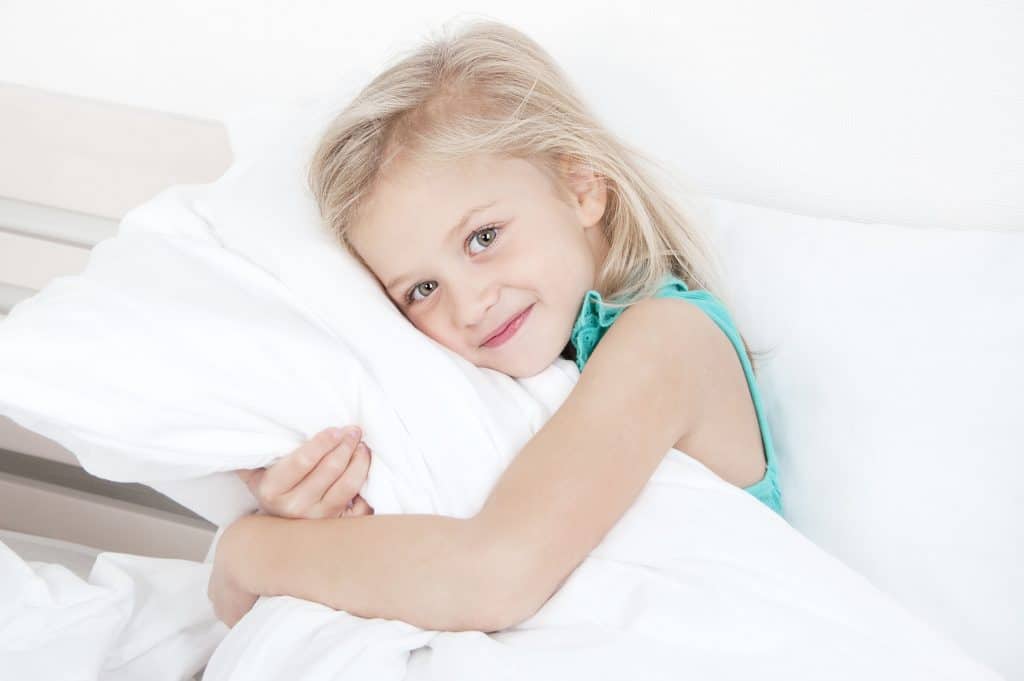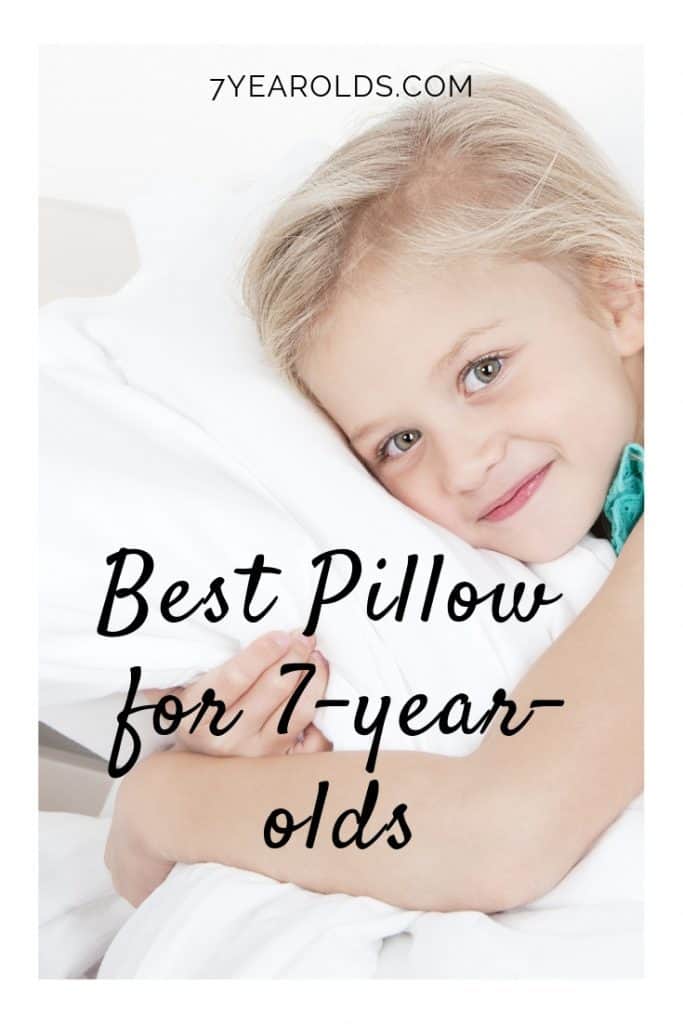
Sleep is the best part of everyone’s day, and the worst feeling is an uncomfortable pillow after a long day. Everybody needs the right kind of pillow, even little kids.
So, what is the best pillow for seven-year-old kids? Young children cannot just use a normal adult pillow because they don’t have adult proportions. The best option is a contoured pillow that fills the space between the child’s shoulder and neck (when they are lying on their side) and doesn’t sink too much.
Obviously, a lot of pillows fit that description, and if you truly want the best pillow for your child, then you probably have more questions. So I’m going to explain how to choose the best pillow, find out the right age and time to introduce pillows to your child, and suggest product recommendations for you.
Best Pillow for Seven Year Old Kids
The most important part of a pillow is the support it will give the head and neck while sleeping. And heaven knows we all need some posture correcting after spending hours bending over a screen all day.
When you are sleeping on your side (the most common sleeping position), there is a gap between your head and the mattress. The best pillow for anybody sufficiently fills that gap just right to prevent your head from being raised too much.
Contoured pillows fulfill that need the best because the support both the head and neck. Classic oval shaped pillows are notoriously bad at that, as they typically just support the head.
The worst thing during the night is to wake up and realize that your pillow is escaping by inching further and further up the bed. After a night like that, you’re sure to have a crooked neck.
I’m sure everybody can agree with me there. Contoured pillows are also good at preventing such escapes.
Adult-sized pillows provide support and fill the gap for adult-sized people. That’s the reason you can’t expect your seven-year-old to be able to sleep well with one.
You want to make sure the pillow is not too soft. If the pillow is too soft, your child’s head could sink too far into it, causing breathing problems.
Choosing the correct pillow will ensure that your child develops good posture. With support for an entire eight hours of sleep, they will be sure to carry themselves better throughout the day. The support will also help them sleep better at night.
What to Consider When Purchasing
Allergies
Know if your child is allergic to anything. You might want to take them in for an allergy test at this point if you haven’t already. But chances are, if you haven’t noticed anything serious, you’re probably good to buy whatever material of pillow you want.
However, if your child is allergic to certain types of material like wool (that’s the most common one), then just make sure to read the material “ingredients” on the tag before you purchase the pillow.
Along those lines, you might want to consider buying a pillow with a cover that is made out of organic cotton. Organic cotton doesn’t have any of the chemicals associated with the process of manufacturing cotton.
If you don’t want your child exposed to and breathing in the “leftovers” of those chemicals, then go organic.
Durability
Push down on the pillow and see how long it takes for it to regain its shape. If it doesn’t regain its shape, then it will sink too far underneath your child’s head and possibl restrict their breathing. Avoid those.
Firmer pillows bounce back quicker and are safer for your child to use. Don’t worry so much about firmer pillows being possibly less comfortable for your child.
\All seven-year-olds I know could sleep through a tornado (though for some reason, they seem to have the urge to get out of bed at six o’clock in the morning).
Look at the thread count. The thread count is the number of threads per square inch of the pillow. The higher the thread count is, the more durable and the less scratchy the pillow will be.
The fill should be able to support your child’s head and withstand a few years of nightly tossing and turning. The most popular ones include:
- down
- feather
- synthetic
- foam (memory or otherwise)
Now might also be a great time to check the guarantee on the pillow. It’s going to go through a rough time at the hands of a second grader, so buying a pillow with a good warranty would definitely be worth it.
Laundering Instructions
Unfortunately, as any parent can tell you, you’re going to have a few messes. Accidents in the bed, sick nights, slumber parties, and midnight snacks (even though you’ve told them a million times not to bring food into their rooms) means that you’re going to have to wash that pillow more than once in its lifetime.
Some pillows are machine washable, which is really nice. Others are only able to spot cleaned. Still others have to be dry cleaned. The laundering instructions don’t make or break a pillow for your child, but you might just want to take it into consideration.
When Your Child Should Start Using a Pillow
You should look for a few signs before giving your child a pillow for the first time to make sure that their body is ready for it.
When your child’s shoulders start getting wider than his or her head (this usually happens around 18-24 months), then they will probably be more comfortable sleeping with a pillow.
You also might want to introduce your child to a pillow if they start having trouble sleeping, or can only sleep well if their head is propped up. They also might start putting a stuffed animal or blanket underneath their own heads while they sleep.
If your child is still sleeping well without a pillow, then you can hold off longer. The point of introducing a pillow is to make your child more comfortable.
Once they get to about five years old, you might want to introduce a pillow anyway, just to make sure that they develop the right posture.
Product Recommendations
Little One’s Pillow
$23 on Amazon.com. No pillow case is needed, so that’s one less thing to wash and keep track of. It is made of organic cotton, so it lacks all of the nasty chemicals you don’t want to expose your child to.
Little One’s Pillow offers a customized pillow to best suit your child’s support needs. They were designed with consulting chiropractors and pediatricians.
Calla Toddler Pillow
$40 on Amazon.com. It is completely machine washable and made of organic cotton. It is the right size and firmness for small heads and has a three-year money back guarantee. There is no case required for this pillow either.
Clevamama Foam Toddler Pillow
$27 on Amazon.com. There is a removable and machine washable cover. It is made of memory foam to cradle and support your child’s head. It is breathable and hypoallergenic, so it doesn’t have a load of nasty chemicals embedded in the fabric.
Related Questions
When can a baby sleep with a pillow and a blanket? You are going to want to wait in introduce a pillow or blanket to your child until your child is at least one year old. As a rule of thumb, you want to wait until your child moves from the crib to a bed. The use of pillows and blankets before this increases the risk of suffocation.
When do children switch to a toddler bed? Well, it’s really all up to if you think your child is ready or not because every child is different. However, the most common age for a child to move into a toddler bed is around three years old.
